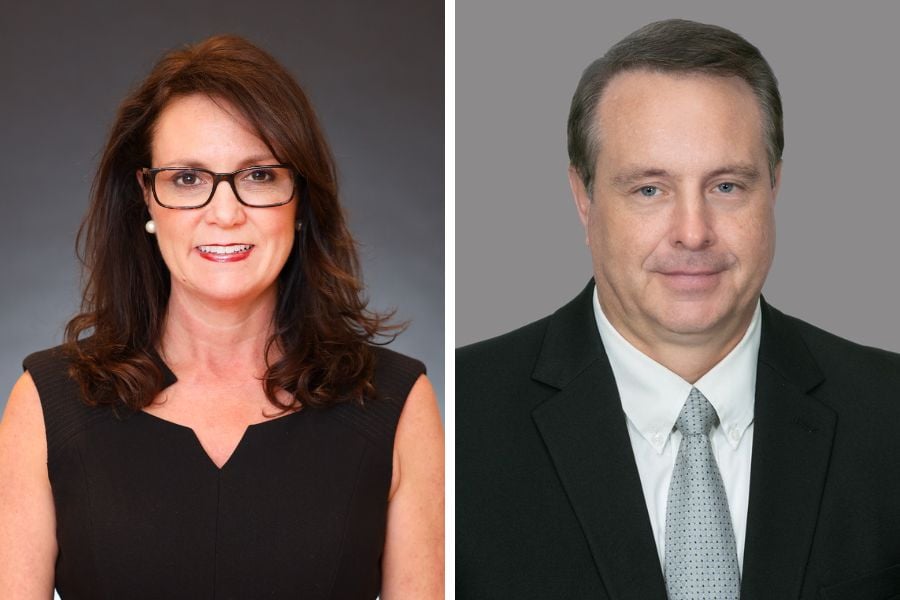

Americans have a lot of worries about retirement, whether that’s having too little in savings or how the upcoming presidential election will hurt their accounts.
Data from a survey published today by Schroders found that people on average say they would need $1.2 million to retire comfortably, but nearly half, 46 percent, will likely have $500,000 or less. Another 23 percent expect to have less than $250,000, and just under 30 percent of the 2,000 US investors surveyed in April said they are on track to have at least $1 million saved by an average planned retirement age of 63.
“Having a ‘magic number’ for retirement assets can be both beneficial and problematic. On the positive side, it provides a clear goal that motivates and guides savings and investment strategies,” Deb Boyden, head of US defined contribution at Schroders, said in an email. “However, relying on a single target number has its drawbacks. It can oversimplify the complexities of retirement planning, overlooking personal circumstances, inflation, healthcare costs, and lifestyle changes.”
What people don’t understand about saving and investing can hurt them, according to Schroders. More than a quarter of investors, 28 percent, said they have no idea about how their retirement assets are allocated, the survey found. However, those who are active in allocating their account assets appear to be reacting with fear about the market, as many are overweighted in cash. The average allocation is 29 percent in equities, 28 percent in cash, 19 percent in fixed income, 16 percent in target-date funds, and 8 percent in other categories, the company found. Two-thirds of those with cash allocations said they worry about losing money in the stock market, according to the report.
“Both younger and older investors are inappropriately allocating a significant portion of their retirement assets to cash,” Boyden said. “Younger investors in particular have the advantage of time, which is crucial for benefiting from the compounding returns of the market. By over-allocating to cash, they miss out on these potential gains, leading to a significant opportunity cost and making it harder to close the retirement savings gap over time. Older investors, while understandably more conservative, also risk missing out on market returns by holding too much cash.”
Worries persist among retirement investors, with 60 percent saying they are concerned about having enough money and 39 percent losing sleep over it.
But even more people are nervous about the rematch between President Joe Biden and former President Donald Trump in November. Most, 88 percent, said they are worried about how the election will affect their retirement savings, according to Schroders. Only about a third said they don’t plan to make any changes to their accounts leading up to the election, while 32 percent are unsure, 28 percent will make their allocations more conservative, and 9 percent will ramp up the level of risk in their accounts, the survey found.
Still, there are positive signs that people are saving more than ever for retirement. Separate data published today by the Employee Benefit Research Institute found that there have been significant increases in account balances and participation rates in retirement accounts over the past few years. According to data from the Survey of Consumer Finances, which EBRI analyzed, total median retirement account balances increased by 15 percent between 2019 and 2022, while participation rates went from 50.5 percent to 54.3 percent.
“We’re hitting that point where auto enrollment is really starting to kick in,” said Craig Copeland, director or wealth benefits research at EBRI. For the first time, heads of households participated in employer-sponsored defined-contribution plans such as 401(k)s at a rate above 80 percent, he noted. The increase is likely due in part to automatic enrollment in plans, which not only affects younger workers who are new at companies but also older ones who switch jobs, he said.
Average individual account balances for families reached about $334,000 in 2022, up from just under $300,000 in 2019, EBRI found.
“These retirement plan assets make up two-thirds of their financial assets,” Copeland said. “It’s a huge factor in what they’re saving and where they’re saving.”
There has also been an increase in the use of Roth IRAs, particularly among younger workers, who often value the option for preretirement access to the money they contribute but may not have tax liabilities large enough to benefit from the pretax nature of traditional IRAs, he said.
In 2022, 16.1 percent of families had Roth IRAs and 13.3 percent had traditional IRAs, up from 11.9 percent and 11.5 percent in 2019, respectively.
“That has really become a big savings vehicle for those younger than 35,” Copeland said.

Firms in New York and Arizona are the latest additions to the mega-RIA

The agent, Todd Bernstein, 67, has been charged with four counts of insurance fraud linked to allegedly switching clients from one set of annuities to another.

“While harm certainly occurred, it was not the cataclysmic harm that can justify a nearly half billion-dollar award to the State,” Justice Peter Moulton wrote, while Trump will face limits in his ability to do business in New York.

Sieg, 58, was head of Merrill Wealth Management, left in 2023 and returned that September to Citigroup, where he worked before being hired by Merrill Lynch in 2009.

Technology can do a lot of things, but advisors still have undeniable value
Orion's Tom Wilson on delivering coordinated, high-touch service in a world where returns alone no longer set you apart.
Barely a decade old, registered index-linked annuities have quickly surged in popularity, thanks to their unique blend of protection and growth potential—an appealing option for investors looking to chart a steadier course through today's choppy market waters, says Myles Lambert, Brighthouse Financial.
